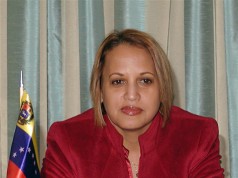WASHINGTON — President Barack Obama and President Hu Jintao
agreed Tuesday that U.S. and Chinese scientists and engineers will work
together to speed the widespread use of electric cars, buildings that need far
less energy and coal-fired power plants that don’t pump out gases that cause
global warming.
The collaboration will be a two-way street, Energy Secretary
Steven Chu said in a phone interview from Beijing, where he was accompanying
Obama. The U.S. stands to gain not only from an expanded market for exports and
more jobs at home, but also from demonstration projects in China that serve as
large experiments for working out problems in new technology, Chu said.
The work will be anchored through a new U.S.-China Clean
Energy Research Center. The $150 million funding over five years will be shared
equally between the countries. “That’s more than talking,” Chu said.
The research center and other clean-energy projects should
help show international negotiators who are working on a global
climate-protection treaty that the U.S. and China, the world’s two largest
sources of greenhouse gases, are serious about reducing emissions, Chu said.
China and the U.S. together are responsible for about half
of the world’s coal consumption, and they generate roughly 40 percent of the
global emissions of heat-trapping gases.
“If you think about where we were both nationally and
internationally just a year ago or two years ago versus where we are today,
we’re talking now about concrete steps where both countries recognize climate
change issues, both countries want to work in this direction and want to help
each other,” Chu said. “If you work together to solve problems you go
much faster. And both of us realized there’s a great opportunity economically
if we cooperate, and there’s a pressing need for it.”
The use of coal is one area in which cooperation will be
especially needed, the U.S. energy secretary said. China already has GreenGen,
a project to capture and store the emissions from burning coal for electricity.
The U.S. is restarting its own large demonstration, FutureGen, in Illinois;
other countries also are developing pilot projects.
Collaboration will help scientists work out problems.
“Experience shows when you string all these things together there are
going to be lessons, there are going to be surprises and you’re going to
learn,” Chu said.
Neither country captures emissions from coal plants today
because of the cost.
The U.S. goal is to bring costs down and make storage of
greenhouse gases from coal plants widely used worldwide in eight to 10 years,
rather than the 20 years or more commonly thought to be needed, Chu said.
Some U.S. experts have said that more commercial-scale
demonstration projects in China are needed to speed up progress. The agreement,
however, said only that the two presidents would “promote
cooperation” on large carbon-capture and storage projects.
The announcement on coal included some other investments
that could lead to reduced greenhouse-gas emissions. For example,
Missouri-based Peabody Energy announced that it had finalized a plan to invest
in GreenGen, and Climate Solutions Asia, a subsidiary of Arlington, Va.-based
AES Corp., entered a joint venture agreement with Chinese companies to use
methane recovered from a coal mine to generate electricity.
On The Web
A guide for all ages by U.S. scientists: “Climate
Literacy: The Essential Principles of Climate Science”: http://www.climate.noaa.gov/education/
Via McClatchy-Tribune News Service.













